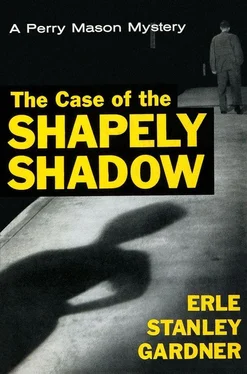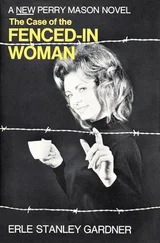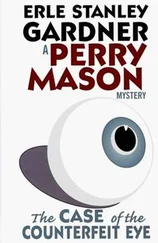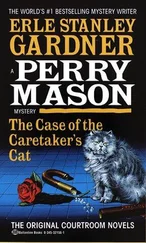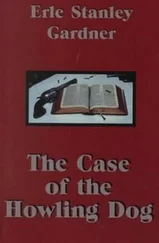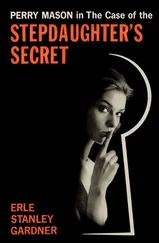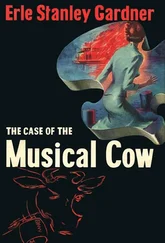“However, we propose to show that the well-laid scheme of the defendant had several weak points, several holes which will become readily apparent as the evidence develops.
“We propose to show that Cole B. Troy, an associate of Morley Theilman, saw a young woman meeting the description of the defendant shadowing Morley Theilman when he left Bakersfield on the night before his death.
“We propose to show that when Mr. Theilman left the office of Cole B. Troy he had no intention other than that of driving directly to his home to the north of this city. That he was shadowed by the defendant who accosted him and inveigled him into going to the mountain subdivision to spend the night with her.
“We propose to show indisputably, by circumstantial evidence, that the defendant in this case appropriated to her own use monies which had been withdrawn by the decedent from his bank in the form of cash. We propose to show that the motive for the murder was the theft of a large sum of money, perhaps as much as two hundred thousand dollars in cash.
“We will prove to you, by circumstantial evidence which cannot be refuted, that the parties drove to this rendezvous in the mountains back of Palmdale, that there was a thunderstorm in the early hours of the morning, and that this thunderstorm so moistened the soil in front of the cabin where the body was found that it would have been impossible for any automobile to have driven up to that cabin, or driven away from it, without leaving tracks in the soft mud; that the only tracks which were left driving away from the scene of the shooting were those made by the defendant’s car.
“On the strength of that evidence we shall ask for a verdict of first-degree murder.”
Ruskin again bowed to the court, returned to the counsel table and sat down.
“Does the defense have any opening statement?” Judge Seymour asked.
“The defense does,” Mason said.
He arose and faced the jury. “Ladies and gentlemen,” he said, “I ask you to bear in mind the fact that all of this evidence which has been indicated by the prosecutor is circumstantial evidence. We expect to show that these circumstances are all fully capable of being explained by a reasonable hypothesis other than that of guilt.”
“If the Court please,” Ruskin said, “this is not the time or the place to argue the case. If the defense counsel wishes to state what he expects to prove, we have no objection. If he wishes to argue the case, he should wait until the proper time.”
“Very well, Your Honor,” Mason said gravely, and turning to the jury, said, “We expect to prove that the defendant is innocent.” Then he walked back to his place at the counsel table, seating himself.
A ripple of merriment sounded in the courtroom, and some of the jurors were seen to smile.
Judge Seymour said, “The prosecution will proceed with its case.”
Ruskin called a licensed surveyor who introduced road maps showing the location of the subdivision, a sketch map of the place where the body was found, showing the interior of the building, the position of the body, and the relationship of the building to the surrounding terrain.
He then called a photographer who introduced in evidence pictures that had been taken showing the body, the terrain, and the interior and the exterior of the building.
“Call Mr. Marcus,” Ruskin said.
Marcus proved to be a meteorologist who stated that on the early morning of Wednesday, the fourth, there was a thundershower in the mountains back of Palm-dale; that this shower, while of brief duration, was somewhat violent and that it was accompanied by a precipitation which could only be estimated but which in his opinion was amply sufficient to account for the softness of the ground in front of the little structure which had been used as an office in the real estate subdivision.
Photographs were introduced showing the muddy section in question and showing the tracks of an automobile crossing this muddy section.
“Cross-examine,” Ruskin said to Perry Mason.
Mason seemed quite affable as he rose and bowed to the witness. “Do you know what time the thundershower occurred?” he asked.
“It was approximately five o’clock in the morning.”
“What do you mean by approximately?”
“Well, I’ll put it this way. It was between four-thirty and five-thirty a.m. In view of the fact that the thunderstorm was exceedingly localized in its sweep over the locale, it is impossible to pin the time down any closer than that. But I can say definitely it was between four-thirty and five-thirty.”
“That was on the morning of Wednesday, the fourth?”
“That is correct.”
“How much did it rain at this particular locality?”
“From an inspection of the ground I would say that it must have rained approximately twenty-five hundredths of an inch, perhaps a little more. But there is a slope in front of the structure in question, and water collected in there to a greater extent than would otherwise have been the case. The ground was quite soft, soft enough to have shown tracks — particularly the tracks of automobiles.”
“Did you notice any tracks of automobiles?”
“I did. There was one car, a Cadillac, on the far side of the soft ground. It was parked in front of the structure. It had left no tracks. There were tracks made by an automobile leading from the structure to the highway.”
“And how far was the highway from the structure?”
“There is a surfaced highway within a hundred and fifty feet of the structure. This is not a main highway but it is, nevertheless, a surfaced highway. By that I mean it is surfaced so that it did not soften in the rain and as a result there are no tracks on it, that is, identifiable tracks. It is, however, possible to see the tracks made by the one automobile which came through the soft spot in front of the structure. Those tracks turned downhill on the surfaced highway and left muddied imprints for a distance of perhaps twenty-five feet. The imprints were quite plain at the time the car entered upon the paved highway and then faded out until it became impossible to identify them.”
“Thank you,” Mason said, “that’s all.”
Ruskin called an expert on moulage who testified to photographing the tracks, to making moulages, which he introduced and which showed, in turn, the tracks of all four tires.
“Were these tracks sufficiently distinct so that you could identify the makes of tires that were on the automobile?” Ruskin asked.
“I could, yes, sir. Three of the tires were identical in make. The other one was a different tire. The other one had a small defect in the tread.”
“What tire was that?”
“The tire on the right front wheel.”
“It was a sufficient defect so that it could be identified in the tracks in the soft soil?”
“Oh, yes.”
“Now then,” Ruskin went on, “have you examined a car registered in the name of the defendant, Janice Wainwright, with license number GVB 393?”
“I have.”
“Have you made molds of the tires on that car?”
“I have.”
“Do you have them with you?”
“I do.”
The witness introduced the moulages with appropriate designations, and they were introduced in evidence.
Ruskin said, “Will you please take the moulage casts of the tracks which you found at the scene of the crime and the molds which you made of the tires, and see if they fit?”
The witness said, “I have here moulages of the tracks left at the scene of the crime. These moulages were made in transparent plastic. It is possible to take these moulages and put them over the molds of the tires in order to show the manner in which the tires would fit into the tracks.”
“Will you do this, please, for the benefit of the Court and the jury?”
Читать дальше
